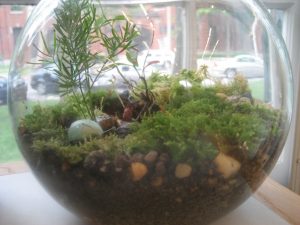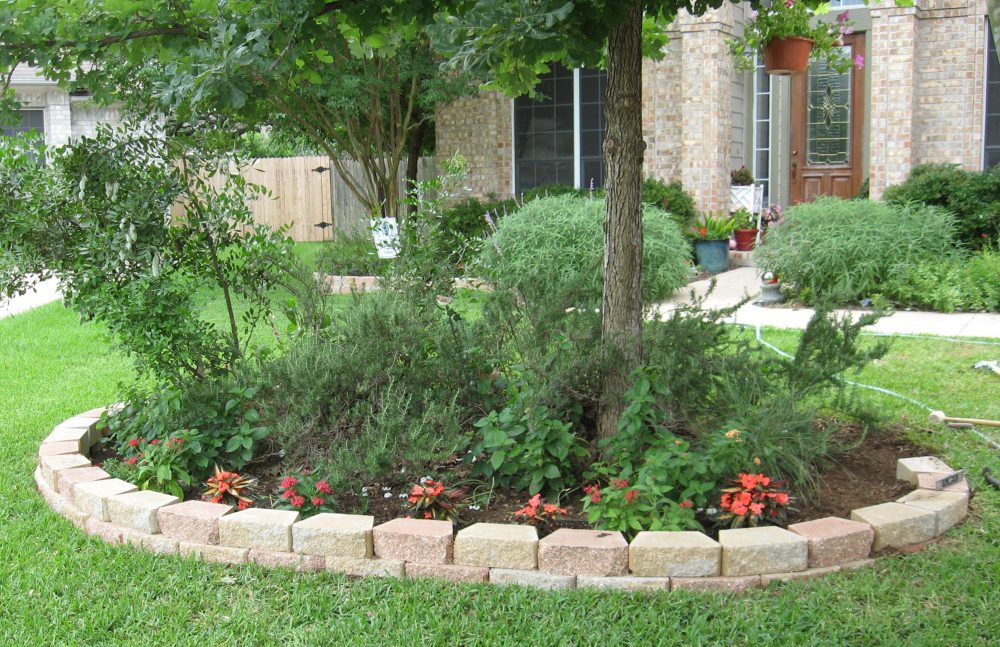
Garden edging is a crucial aspect of landscaping, providing a clean, aesthetic border between different areas of your garden. It enhances the beauty of your outdoor space and serves functional purposes, such as preventing soil erosion and keeping mulch in place.
This article explores various options to help you select the perfect edging for your garden.
What is Garden Edging?
Contents
- 1 What is Garden Edging?
- 2 Types of Garden Edging Materials
- 3 Choosing the Right Material
- 4 Installation Tips for Garden Edging
- 5 Creative Ideas for Garden Edging
- 6 Maintaining Your Garden Edging
- 7 FAQs About Garden Edging Materials
- 7.1 What is the best material for garden edging?
- 7.2 How deep should garden edging be?
- 7.3 Can garden edging help prevent weeds?
- 7.4 Is DIY garden edging installation difficult?
- 7.5 How do I choose the right style of garden edging for my landscape?
- 7.6 How often does garden edging need to be replaced?
- 7.7 Can garden edging be environmentally friendly?
- 7.8 Is it necessary to hire a professional to install garden edging?
- 7.9 How do I maintain my garden edging?
- 7.10 Can garden edging be changed once installed?
- 8 Conclusion
Garden edging plays a vital role in landscape design. It’s more than just a decorative border; it’s a functional element that defines spaces and maintains the garden’s structure. Let’s delve into garden edging and why it’s so important.
Garden edging refers to the barriers or borders between different garden sections. It’s a method used to separate areas like lawns, flower beds, paths, and garden features. The importance of garden edging lies in its ability to create visual interest and order. It helps organize the garden layout, make maintenance easier, and enhance the overall appeal.
The benefits of incorporating garden edging into your landscape are numerous. Firstly, it helps retain soil, especially in flower beds and vegetable patches. It prevents the spread of grass and invasive plants into garden beds. Additionally, garden edging is a barrier for mulch and soil, keeping them in place and preventing erosion. Aesthetically, it adds a polished look to the garden, highlighting specific areas and enhancing the overall design.
Types of Garden Edging Materials
Going through the types of garden edging materials is key to finding the right fit for your landscape. Each material offers unique aesthetic and functional qualities. The variety available, from natural stone to innovative plastics, caters to diverse garden styles and maintenance needs.
We closely examine the different garden edging materials to help you make an informed choice for your outdoor space.
Natural Stone
Natural stone is a popular choice for garden edging due to its durability and timeless beauty. It blends seamlessly with the natural environment, enhancing the aesthetic appeal of your garden.
Varieties and Visual Appeal
Natural stone comes in various types, like granite, slate, and limestone. Each type has unique colors and textures, offering a range of visual options. Whether you prefer a rustic look with rough-cut stones or a more polished appearance with smooth, uniform stones, every garden has a style.
Durability and Maintenance
Stone edging is known for its strength and longevity. It withstands harsh weather conditions and doesn’t fade over time. Maintenance is minimal, often only requiring occasional cleaning to remove dirt or moss.
Installation Considerations
Installing natural stone edging can be labor-intensive, as stones are heavy and may require professional equipment for proper placement. It’s important to ensure that the stones are laid evenly to prevent tripping hazards and achieve a cohesive look.
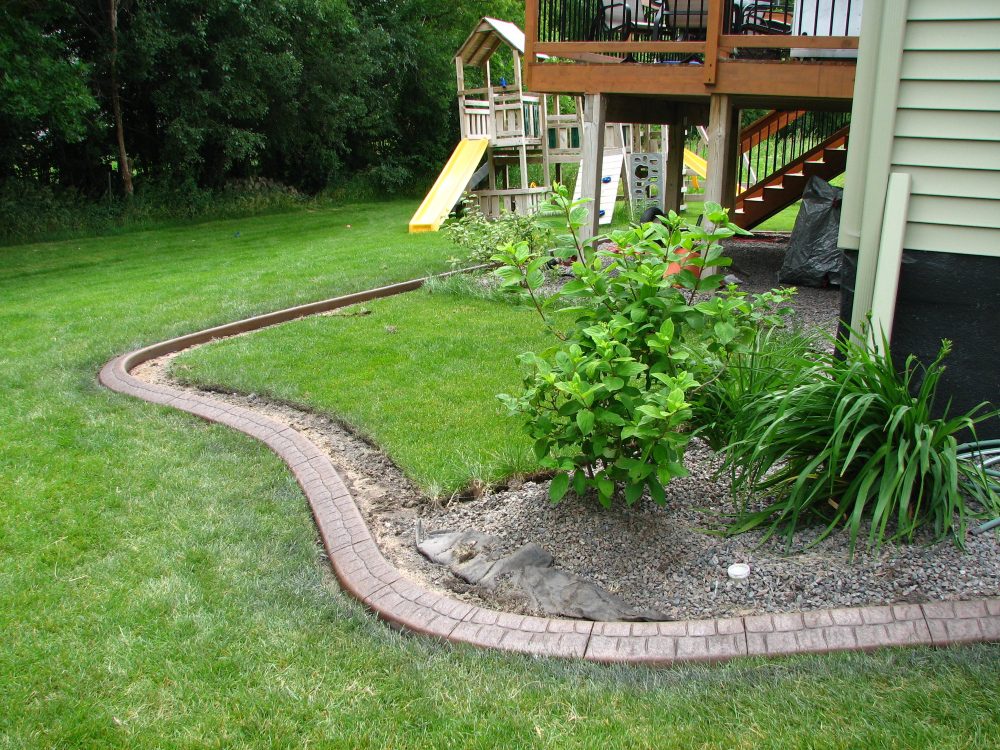
Metal
Metal garden edging is a sleek, modern choice that offers both durability and flexibility. It’s ideal for creating clean, crisp lines in a contemporary garden design.
Types and Aesthetics
Metal edging comes in various types, such as steel, aluminum, and iron. Steel edging, often used for its strength and rustic appearance, develops a natural patina. Aluminum, lightweight and resistant to rust, is suitable for a more refined and modern look. Iron edging offers a traditional, ornamental style, often seen in classic garden designs.
Longevity and Care
Metal edging is highly durable and capable of withstanding extreme weather conditions. It’s particularly effective at keeping invasive species from encroaching on flower beds. Maintenance usually involves occasional cleaning and, for certain metals, rust prevention treatments.
Installation Insights
Metal edging is relatively easy to install. It often comes in flexible strips easily shaped around garden beds. The installation process typically involves anchoring the edging into the ground with stakes.
Wood
Wooden garden edging brings a natural, warm touch to any landscape. It’s versatile and can be used in various garden styles, from rustic to contemporary.
Variety and Natural Beauty
Common types of wood used for edging include cedar, redwood, and treated pine. Each has a distinct look and feel. Cedar and redwood offer natural resistance to decay and insects, while treated pine is a cost-effective option with added durability.
Durability and Upkeep
Wood edging requires more maintenance than other materials. It may need regular treatments to prevent rot, decay, and insect damage. Over time, wood can weather to a silver-gray hue, adding a different aesthetic quality to the garden.
Ease of Installation
Wood edging is user-friendly and ideal for DIY projects. It can be cut to size and shaped to fit the contours of your garden. Installation often involves fixing the wood to stakes driven into the ground, ensuring stability and alignment.
Plastic
Plastic garden edging is a practical and cost-effective option. It’s versatile and has various styles, making it suitable for landscape designs.
Varieties and Flexibility
Plastic edging is available in numerous forms, including rolls of flexible edging and rigid, decorative panels. It can mimic the appearance of stone or wood, offering an affordable alternative to more expensive materials. This flexibility makes it ideal for creating smooth curves or circular designs in the garden.
Durability and Maintenance
Plastic is weather-resistant and doesn’t rust or rot, making it a low-maintenance choice. However, it may not be as durable as metal or stone and can be prone to lawnmower damage or extreme temperatures. Periodic checks and adjustments might be necessary to keep it in place.
Installation Tips
One of the biggest advantages of plastic edging is its ease of installation. It’s lightweight and can be easily cut to the desired length. Installation typically involves digging a shallow trench and securing the edging with stakes.
Concrete
Concrete garden edging offers a blend of durability and versatility. It’s a robust option, suitable for both contemporary and traditional gardens.
Aesthetic and Customization
Concrete edging can range from simple precast blocks to custom-poured designs. It can be colored or textured to match the garden’s theme. Precast concrete edging comes in various shapes, including straight lines, curves, and decorative patterns, fitting different landscape needs.
Strength and Longevity
Concrete is highly durable and withstands various weather conditions. It’s an excellent choice for creating permanent, sturdy borders in the garden. Over time, it maintains its structure without the need for frequent replacements.
Installation Considerations
Installing concrete edging can be more labor-intensive, especially for custom designs. Precast blocks are easier to handle and can be a DIY project. Professional installation is often recommended for poured concrete to ensure a smooth, level finish.
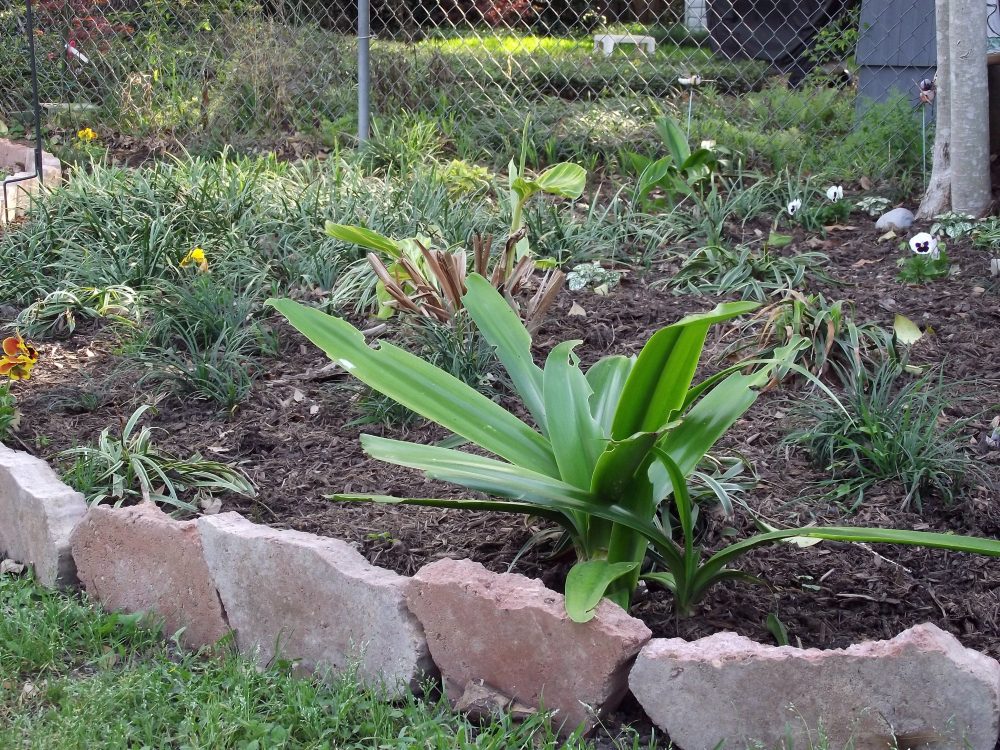
Stone
Stone garden edging presents a classic, elegant choice that naturally complements any garden setting. Its timeless appeal and durability make it a favorite among gardeners and landscapers.
Varieties and Natural Aesthetics
Stone edging comes in various options, from natural fieldstone and river rock to cut granite and flagstone. Each type offers a unique texture and color palette, fitting various garden styles. Natural stone provides an organic, earthy look, while cut stone offers a more formal and structured appearance.
Durability and Maintenance
Stone is exceptionally durable and capable of withstand harsh weather without losing charm. It requires minimal maintenance, occasionally needing weeding and cleaning to maintain its natural beauty. Stone edging remains stable, making it a great long-term investment for any garden.
Installation Insights
Installing stone edging can be labor-intensive, especially if the stones are large or heavy. It often involves digging a trench and carefully placing each stone for stability and aesthetic appeal. The effort, however, pays off with a stunning, natural border that enhances the garden’s overall look.
Rubber
Rubber garden edging is an innovative, eco-friendly choice. Made from recycled materials, it’s a sustainable option with flexibility and durability.
Eco-Friendly and Versatile
Rubber edging is often made from recycled tires, making it an environmentally responsible choice. It’s available in various styles and colors, including options that mimic the look of stone or wood. Rubber is flexible and ideal for gardens with curved borders or irregular shapes.
Durability and Ease of Maintenance
Rubber edging is weather-resistant and robust, capable of withstanding temperature fluctuations without cracking or fading. It’s also low-maintenance, requiring little more than occasional cleaning to keep it looking fresh.
Simple Installation
One of the main advantages of rubber edging is its ease of installation. It’s lightweight and typically comes in roll form or as interlocking pieces. Installation involves laying the edging along the desired border and securing it with stakes or pegs, making it a great DIY project.
Timber
Timber garden edging brings a natural, rustic charm to any landscape. It’s a popular choice for those seeking a traditional or cottage garden look.
Natural Appeal and Variety
Timber, typically available in woods like cedar, pine, and redwood, offers a range of aesthetic choices. Cedar and redwood are naturally resistant to rot and pests, while treated pine is a cost-effective and durable option. Timber can be left in its natural state or stained to match the garden’s style.
Maintenance and Longevity
While timber adds warmth and natural beauty, it requires more upkeep than other materials. Regular treatments with wood preservatives are necessary to prevent rot and extend its lifespan. Over time, timber may weather to a silver-gray hue, adding character to the garden.
Installation Process
Installing timber edging is a straightforward DIY project. It usually involves cutting the timber to size, aligning it along the garden border, and securing it with wooden stakes or directly into the ground.
Composite
Composite garden edging is a modern, low-maintenance option. It combines the aesthetic appeal of wood with the durability of plastic.
Aesthetic and Durability
Composite edging often mimics the look of real wood but is made from a blend of wood fibers and recycled plastics. This combination makes it resistant to rot, decay, and insect damage. It’s available in various colors and styles, offering the visual appeal of timber without the maintenance.
Ease of Maintenance
One of the biggest advantages of composite edging is its low maintenance. It doesn’t require regular sealing or staining like real wood. It’s also resistant to weathering, maintaining its color and integrity over time.
Simple Installation
Installing composite edging is similar to working with timber. It can be cut to length and installed using standard garden tools. It’s lightweight and easy to handle, making it an excellent choice for DIY garden projects.
Choosing the Right Material
Selecting the ideal garden edging material is crucial for your landscape’s functionality and aesthetics. The right choice depends on your garden’s style, climate, and maintenance preferences.
Matching Style with Garden Design
Your garden’s design is a key factor in choosing edging materials. Materials like cut stone or concrete offer a structured look for a formal garden. On the other hand, natural stone or wood complements rustic or cottage-style gardens. Metal or composite materials can provide a sleek, modern edge for contemporary spaces.
Durability and Maintenance Considerations
Consider the climate and the level of maintenance you’re willing to undertake. Materials like natural stone and metal are durable, require minimal upkeep, and are suitable for harsh weather conditions. Wood and plastic may require frequent maintenance or replacements while offering a natural or flexible design.
Environmental Impact and Sustainability
For environmentally-conscious gardeners, the sustainability of materials is a crucial consideration. Recycled plastic or rubber edging is eco-friendly, reducing waste. Timber from sustainable sources or composite materials can also be a responsible choice.
Installation Tips for Garden Edging
Proper garden edging installation is crucial for its functionality and aesthetic appeal. Whether you’re a DIY enthusiast or considering professional installation, these tips will guide you.
DIY vs. Professional Installation
When installing garden edging, one of the first decisions is whether to undertake the project yourself or hire a professional. This choice largely depends on the material chosen, your skill level, and the complexity of your garden’s design.
DIY installation can be a fulfilling project for those who enjoy hands-on work in the garden. It allows for complete control over the design and can be more cost-effective. Materials like plastic, wood, and certain metals are more user-friendly and easily handled in a DIY project. These materials often come with detailed instructions and require basic tools, making them suitable for most homeowners.
Before starting a DIY project, assess your skill level and the tools required. Ensure you clearly understand the installation process and the time commitment involved. Breaking the project into smaller sections for complex designs or larger gardens can make the task more manageable.
Professional installation is recommended for more complex materials like stone or concrete. These materials often require specialized tools and techniques for proper placement and leveling. Professionals can ensure that the edging is installed correctly and is durable enough to withstand environmental factors. This is especially important in gardens with intricate designs or uneven terrain.
Hiring a professional can save time and ensure high-quality results. Professionals have the expertise to handle unexpected challenges and can often complete the installation more quickly and efficiently than a DIY approach. They can also advise on the best materials and designs for your garden needs.

Common Challenges and Solutions
Installing garden edging can present various challenges. Addressing these effectively ensures a smooth installation process and a visually pleasing outcome.
- Ensuring Straight Lines and Even Placement: Achieving straight lines, especially over long distances, can be difficult. Use a string line or a laser level to mark a straight path. For longer gardens, measure and place markers regularly to maintain alignment.
- Handling Curved Designs: Creating smooth even curves with rigid materials is challenging. For flexible materials like plastic or rubber, lay them out in the sun to become more pliable, making it easier to form curves. With rigid materials like brick or stone, use shorter sections to create a gentle curve. Lay out the pieces first to visualize the curve before securing them.
- Leveling the Ground: Uneven ground can lead to unstable or uneven edging. Use a level to check the ground regularly as you dig the trench. Fill in low spots and remove high spots for an even surface.
- Securing Edging in Loose Soil: Edging might not stay in place in sandy or loose soil. Use longer stakes or anchors to secure the edging. For some materials, like metal or plastic, burying a portion of the edging deeper can provide additional stability.
Preparing the Site
A well-prepared site is key to successful garden edging installation.
- Clearing the Area: Remove any debris, stones, or roots in the area where you plan to install the edging. This helps create a clean line and ensures that the edging sits properly.
- Leveling the Ground: Use a rake and a spirit level to ensure the ground along the edging line is level. This is crucial for both aesthetic appeal and functional stability of the edging.
- Digging the Trench: The depth and width depend on the edging material type. A trench about 4-6 inches deep is sufficient for most edgings. A deeper trench may be required to stabilize heavier materials like stone or concrete.
- Ensuring a Level Trench: Use a level during the digging process to ensure the bottom of the trench is even. An uneven trench can lead to unstable edging and an irregular appearance.
- Compacting the Soil: Compact the soil at the bottom once the trench is dug. This step provides a solid base for the edging material, preventing it from sinking or shifting over time.
Securing the Edging
Secure the edging firmly in the ground. For materials like plastic and metal, use stakes or spikes provided by the manufacturer. You might need to dig deeper or use additional support like concrete for stability for wood and stone.
Finishing Touches
After installation, backfill the trench and compact the soil on both sides of the edging. This step helps to secure the edging further and creates a clean, finished look. Adding mulch or stones around the edging can also enhance the overall appearance.
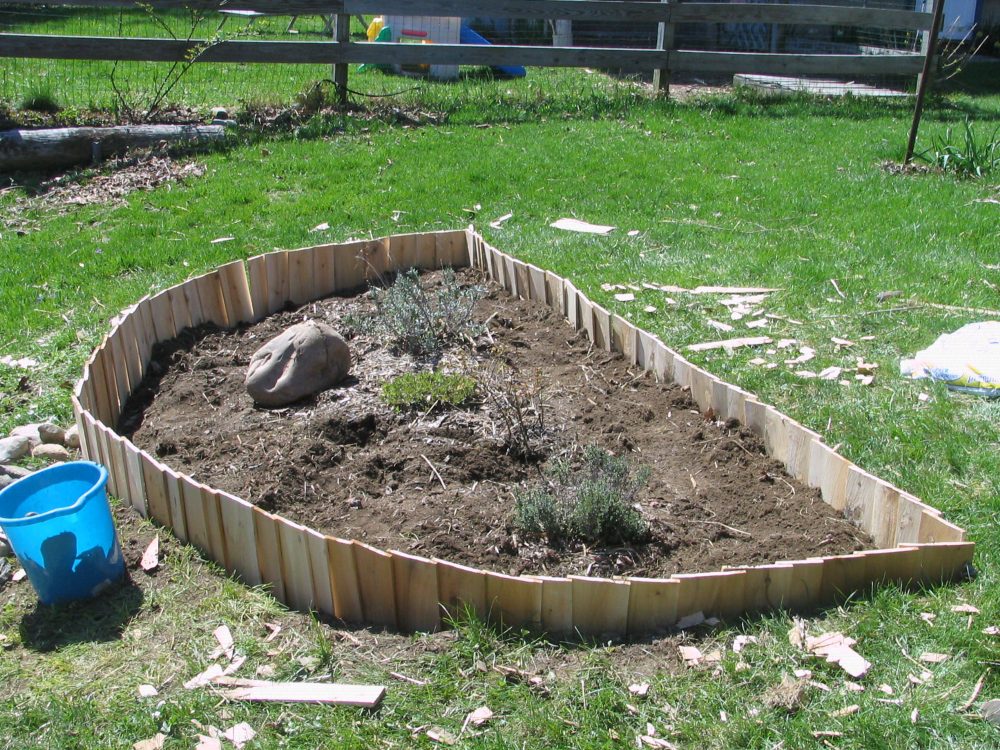
Creative Ideas for Garden Edging
Innovative garden edging can transform the look of your outdoor space. Here are some creative ideas to inspire your garden design:
- Mixing Materials
Combine different edging materials for a unique look. For instance, intersperse stone with metal sections for a modern twist or alternate wood and brick for a rustic charm. This approach adds visual interest and texture to your garden.
- Incorporating Lighting
Embedding lights within or along your edging can create a stunning nighttime effect. Solar LED lights in metal or plastic edging offer a practical and enchanting solution, illuminating paths and highlighting garden beds.
- Elevated Borders
Build raised edging for a dramatic effect. Use materials like stone or concrete to create elevated borders around flower beds. This adds dimension to your garden and makes it easier to tend to plants.
- Curved Lines
Break away from traditional straight lines. Use flexible materials like plastic or rubber to create flowing, organic curves. This can lead to a more natural and relaxed garden layout.
- Patterned Designs
Experiment with patterns in your edging. Arrange bricks in a herringbone or chevron pattern for a decorative touch. For a bold statement, use colored concrete or painted wood.
- Natural Plant Edging
Use low-growing plants or herbs as a living edge. This creates a soft, green border that is both beautiful and practical. Plants like lavender, boxwood, or creeping thyme are excellent choices.
- Recycled Materials
Embrace sustainability with recycled materials. Old wine bottles, broken tiles, or reclaimed wood can be repurposed as unique garden edging. This approach is eco-friendly and adds a personal touch to your garden.
- Artistic Flair
Incorporate art elements into your edging. This could be as simple as painting designs on wood edging or as intricate as creating mosaic patterns with stones or tiles.
- Stepping Stone Integration
Combine edging with stepping stones for a functional and aesthetic design. This is particularly effective in creating cohesive pathways through the garden.
- Thematic Edging
Match your edging to a specific theme. For a seaside garden, use shells or pebbles. Natural stone or bark chips can enhance the ambiance for a woodland theme.
By experimenting with these creative ideas, you can elevate the design of your garden, making your edging both a functional and a decorative feature.
Maintaining Your Garden Edging
Proper maintenance of garden edging is essential to keep it looking great and functioning well. Here are some tips to help you maintain different types of edging materials:
- Regular Inspection: Periodically check your garden edging for any signs of damage, such as cracks, rot, or rust. Early detection of problems can prevent more significant issues later on.
- Cleaning: Keep the edging clean. A simple wash with soap and water can remove dirt and grime from plastic, metal, or composite materials. Stone and concrete may need a gentle brush to remove moss or algae.
- Repair and Replacement: Repair minor damages promptly to extend the lifespan of the edging. Replace broken or severely damaged sections as needed. This keeps the garden looking neat and ensures the edging continues to perform its function.
- Managing Weeds: Control weeds around the edging to prevent them from overgrowing or causing damage. Regular weeding or the use of a weed barrier can be effective.
- Reinforcement: Check and reinforce the stability of the edging periodically. This may involve pushing back loose edging into the soil, hammering in loose stakes, or adding additional support.
- Seasonal Adjustments: Some edging materials may shift or crack in areas with freezing temperatures. Check and adjust the edging in spring to correct any winter damage.
- Treating Wood: For timber edging, apply a wood preservative or sealant every few years to protect it from moisture, rot, and insect damage.
- Protecting Metal: For metal edging, especially iron, apply a rust inhibitor to prevent corrosion. Touch up any paint chips to maintain its appearance and protect the metal.
FAQs About Garden Edging Materials
What is the best material for garden edging?
The best material depends on your garden’s style, climate, and maintenance preference. Durable materials like stone and metal are great for long-lasting, low-maintenance edging. Wood and plastic offer flexibility and suit various styles but may require more upkeep.
How deep should garden edging be?
The depth of garden edging varies by material. Generally, 4-6 inches deep is sufficient for most materials, but heavier edgings like stone or concrete may require deeper trenches for stability.
Can garden edging help prevent weeds?
Yes, garden edging can act as a barrier to prevent the spread of weeds into garden beds. However, regular weeding and maintenance are still necessary.
Is DIY garden edging installation difficult?
The difficulty depends on the material and design. Flexible materials like plastic or rubber are easier to DIY and suitable for beginners. Stone and concrete may require more skill and labor.
How do I choose the right style of garden edging for my landscape?
Consider the overall theme of your garden. Rustic styles benefit from natural stone or wood, while modern gardens may look best with metal or composite edging.
How often does garden edging need to be replaced?
The lifespan varies by material. Stone and metal can last many years with minimal maintenance, while wood and plastic may need replacing more frequently.
Can garden edging be environmentally friendly?
Yes, using recycled materials like rubber or sustainably sourced timber is eco-friendly. Even choosing durable materials that last longer can be a sustainable choice.
Is it necessary to hire a professional to install garden edging?
Not always. Many garden edging projects can be DIY, especially if using materials like wood, plastic, or flexible metal. Complex designs or heavy materials like stone may benefit from professional installation.
How do I maintain my garden edging?
Regular inspections, cleaning, and minor repairs are key. The specific maintenance varies by material, such as applying wood preservative for timber or rust inhibitor for metal.
Can garden edging be changed once installed?
Yes, but the ease of change depends on the material. Flexible materials like plastic and metal are easier to modify or replace than concrete or stone edging.
Conclusion
Garden edging is an essential aspect of landscape design, offering both aesthetic appeal and practical benefits. By choosing the right material, considering installation options, and employing creative ideas, you can significantly enhance the beauty and functionality of your garden.




